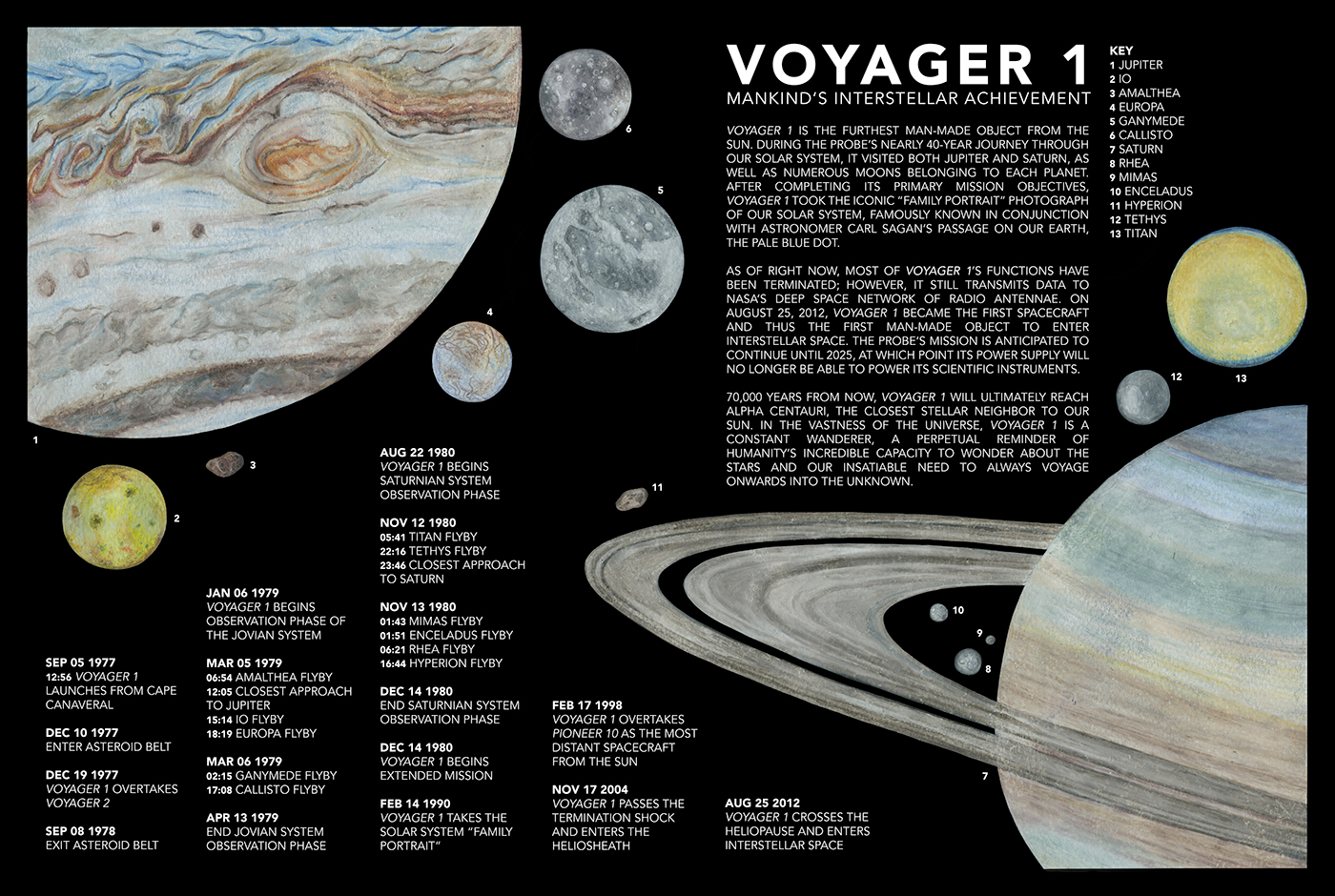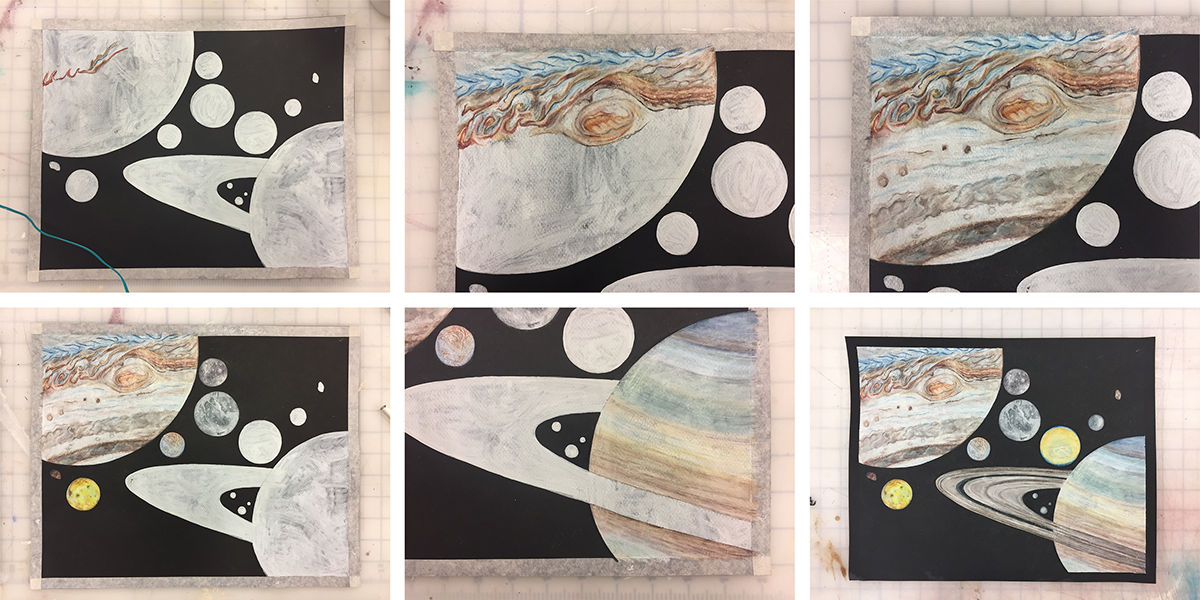T H E S T O R Y
This piece is an informational illustration on the Voyager 1 interplanetary mission. I find space exploration incredibly fascinating, and, to me, the twin Voyager probes are a pinnacle of human achievement and ingenuity. Thus, I wanted to commemorate the first of the two spacecrafts in this illustration for my Intro to Scientific Illustration course at the Savannah College of Art and Design.
Voyager 1 made flybys of Jupiter and Saturn, as well as several of their moons. The two p lanets are proportionate to one another, but I scaled their respective satellites at a different ratio so I could illustrate their features in greater detail (side note: I wish I could tell you what that ratio is, but unfortunately this illustration isn’t a very recent one and I’ve since lost and/or forgotten the math-y side of things).
Most of the reference images used were taken by the Cassini mission (which is another example of mankind’s audacity to venture into the stars), as the two Voyager probes were not equipped with color cameras.
Illustrated traditionally using Prismacolor Premier soft core colored pencils on black Canson Mi-Teintes paper, cleaned up digitally in Adobe Photoshop, with vector text added in Adobe Illustrator. All body copy written by Rachel Sandene.

"Voyager 1 Infographic"
November 2016
12" x 18"
Traditional Illustration with Digital Type
P R O C E S S

Voyager 1 is the furthest man-made object from the sun. During the probe’s nearly 40-year journey through our solar system, it visited both Jupiter and Saturn, as well as numerous moons belonging to each planet. After completing its primary mission objectives, Voyager 1 took the iconic “family portrait” photograph of our solar system, famously known in conjunction with astronomer Carl Sagan’s passage on our Earth, the pale blue dot.
As of right now, most of Voyager 1’s functions have been terminated; however, it still transmits data to NASA’s Deep Space Network of radio antennae. On August 25, 2012, Voyager 1 became the first spacecraft and thus the first man-made object to enter interstellar space. The probe’s mission is anticipated to continue until 2025, at which point its power supply will no longer be able to power its scientific instruments.
70,000 years from now, Voyager 1 will ultimately reach Alpha Centauri, the closest stellar neighbor to our sun. In the vastness of the universe, Voyager 1 is a constant wanderer, a perpetual reminder of humanity’s incredible capacity to wonder about the stars and our insatiable need to always voyage onwards into the unknown.





